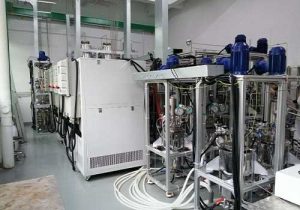industrial water chiller plant
Introduction to Industrial Water Chiller Plants
Industrial water chiller plants are essential for cooling processes in industries such as manufacturing, pharmaceuticals, and food processing. These plants work by circulating chilled water through heat exchangers to cool equipment and maintain a stable environment for processes sensitive to temperature fluctuations.

Components of a Water Chiller Plant
The core components of a water chiller plant include the chiller unit, pumps, heat exchangers, and a control system. The chiller unit itself consists of a compressor, condenser, evaporator, and expansion valve, which work together to remove heat from the water. The chilled water is then circulated through the system by pumps to cool the process or space.
Operation and Maintenance
Proper operation and maintenance are crucial for the efficiency and longevity of a water chiller plant. Regular maintenance tasks include inspecting and cleaning condenser coils, maintaining refrigerant charge, and monitoring water quality to prevent scale buildup and fouling. Additionally, it’s important to follow the manufacturer’s guidelines for start-up, operation, and shutdown procedures to prevent damage to the equipment.

Energy Efficiency
Energy efficiency is a key consideration in the design and operation of industrial water chiller plants. Strategies to improve efficiency include optimizing chilled water temperatures, using variable-speed drives for pumps, and employing heat recovery systems where applicable. Additionally, leveraging modern control systems and implementing predictive maintenance using IoT technologies can further enhance energy savings and operational efficiency.
Impact of Ambient Conditions
The performance of a water chiller plant can be significantly affected by ambient conditions, such as temperature and humidity. For example, high outside temperatures can reduce the effectiveness of cooling towers, which in turn affects the chiller’s ability to remove heat. Therefore, it’s important to consider the local climate when designing and operating these plants.

Optimization and Control
Optimizing a water chiller plant involves a holistic approach that considers the entire system, including pumps, chillers, and cooling towers. Advanced control systems can help balance load distribution, manage peak demand, and ensure that the plant operates at maximum efficiency. Additionally, using data-driven approaches and real-time monitoring can further improve the optimization of these systems.
Conclusion
Industrial water chiller plants are complex systems that require careful operation, maintenance, and optimization to ensure efficient cooling in industrial processes. By adhering to best practices for maintenance, leveraging advanced control systems, and considering the impact of ambient conditions, these plants can be optimized for minimal energy consumption and maximum output. The ongoing digitalization and integration of IoT technologies offer promising avenues for further enhancing the performance and efficiency of water chiller plants in the future.
Related recommendations
water cooling water
530Introduction Water cooling water systems are designed to transfer heat from one body of water to another. Water, with its high specific heat capacity, is an excellent medium for heat transfer....
View detailsHow to Deal with the High Temperature Alarm of the Chiller?
1284How to Deal with the High Temperature Alarm of the Chiller? The high temperature alarm of the chiller will cause the device to trigger the protection switch to be disconnected and cannot cont...
View detailsHow to deal with the cold water chiller compressor not running?
1356How to deal with the cold water chiller compressor not running? 1、 Electrical fault Starting the compressor of the cold water cooler requires the support of electrical signals. ...
View detailswater heating and cooling
786Water Heating and Cooling: Systems and Technologies Introduction to Water Heating and Cooling SystemsWater heating and cooling systems play a pivotal role in energy consumption, accounting for ...
View details
 LNEYA Chiller
LNEYA Chiller






HelloPlease log in